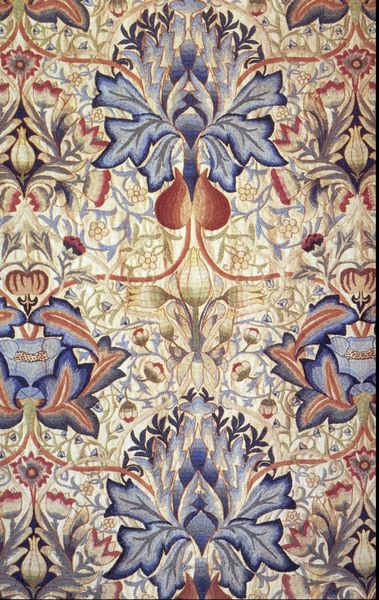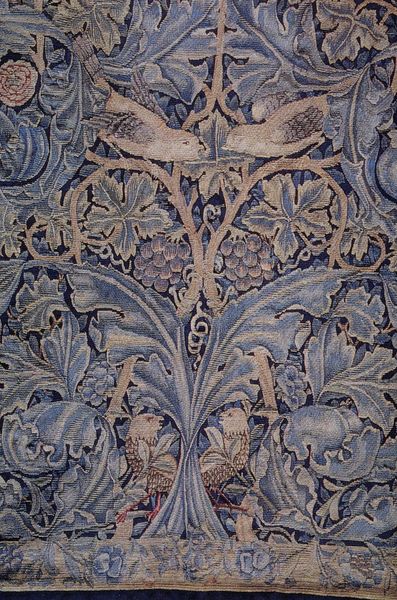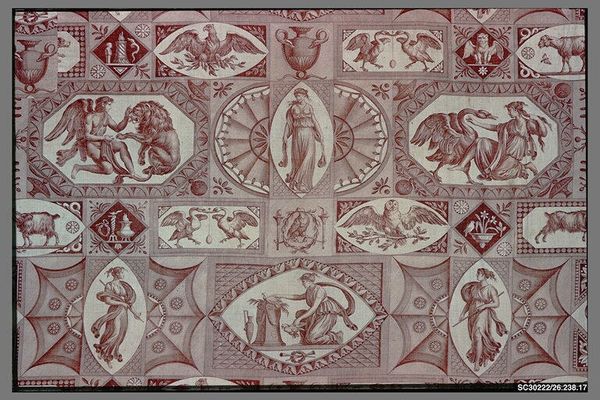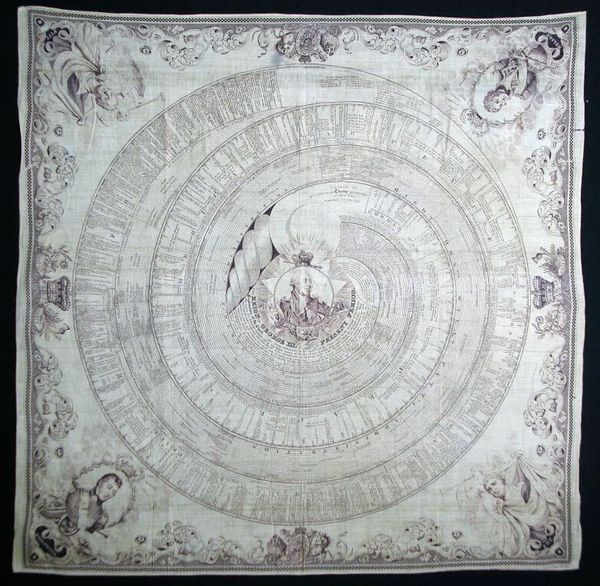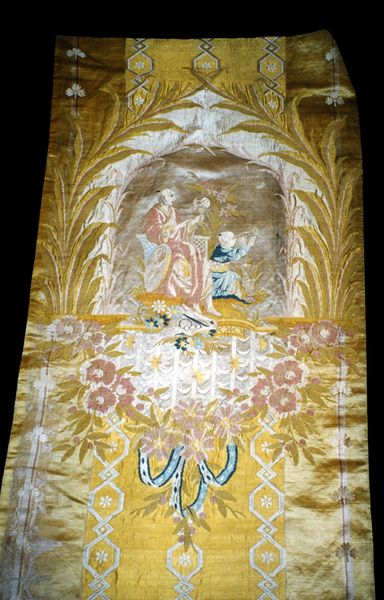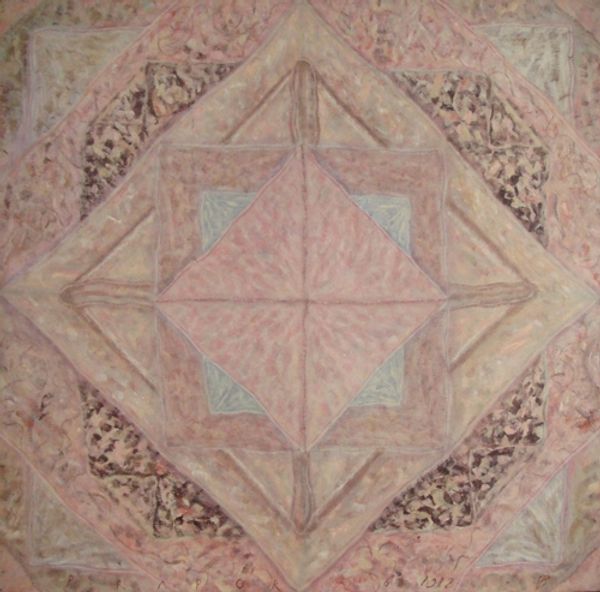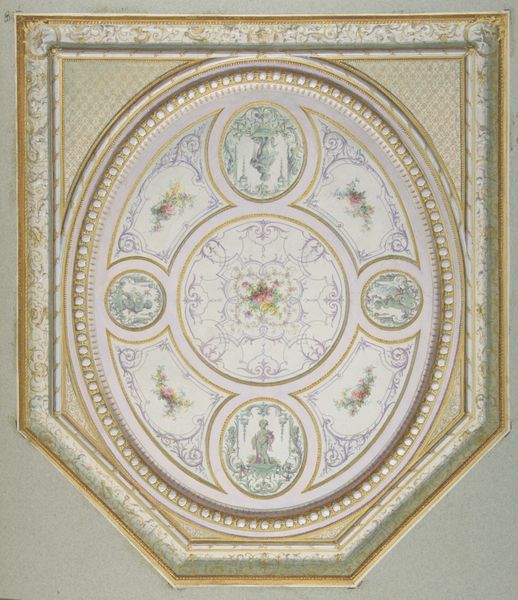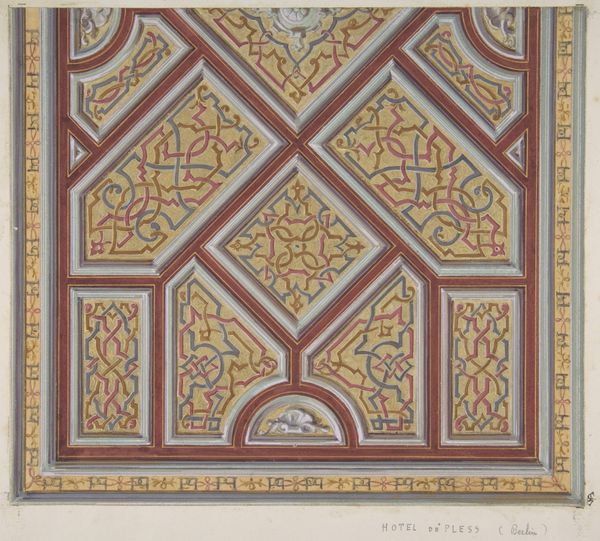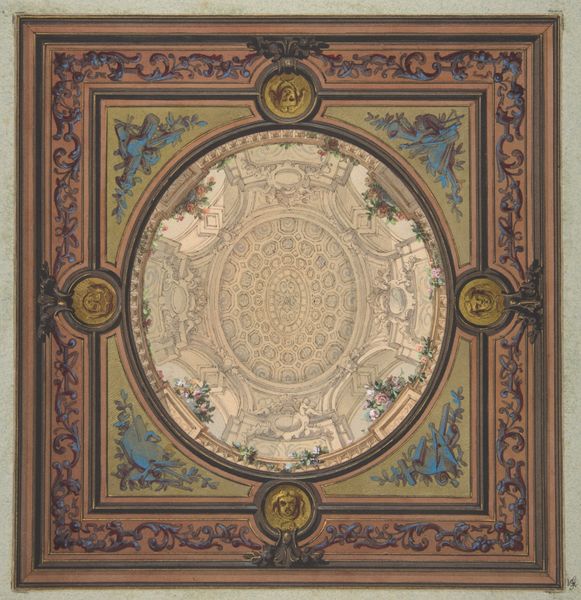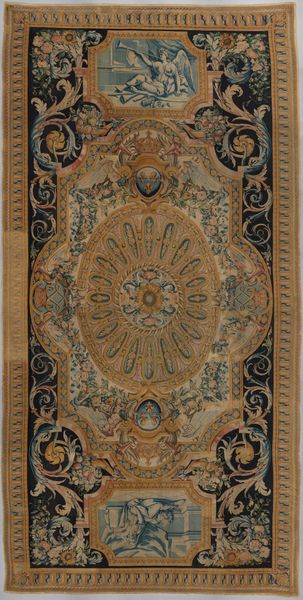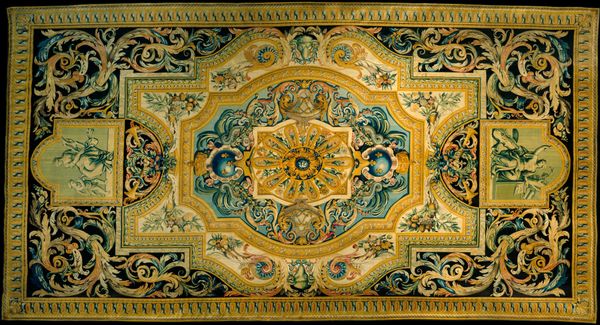
mixed-media, weaving, textile
#
mixed-media
#
organic
#
pattern
#
asian-art
#
weaving
#
textile
#
geometric pattern
#
organic pattern
#
geometric
Dimensions: 290.83 × 210.2 cm (114 1/2 × 82 3/4 in.) Does not include tassels, which extend 5 to 5 1/2 inches from each corner
Copyright: Public Domain
This bedcover was made in India under Portuguese rule, though the precise date of its creation is unknown. It is made with dyed silk, using embroidery as its technique. The cultural exchange between Europe and Asia during this period resulted in hybrid artworks that incorporated elements of both traditions. The imagery on this bedcover creates meaning through visual codes, cultural references, and historical associations. Zoomorphic forms and floral patterns are integrated into the design. The inclusion of a double-headed eagle, a European heraldic emblem, indicates the influence of Portuguese colonial power. The design suggests a fusion of European and Indian artistic conventions. The bedcover serves as a material record of cultural interaction and colonial exchange. Art historians use objects like this bedcover to better understand the complex social and institutional dynamics of cross-cultural encounters during the colonial era. The study of trade routes, colonial archives, and comparative analysis of design motifs help to illuminate the historical context. The bedcover's function as a domestic item also suggests the integration of global influences into private life.
Comments
No comments
Be the first to comment and join the conversation on the ultimate creative platform.
